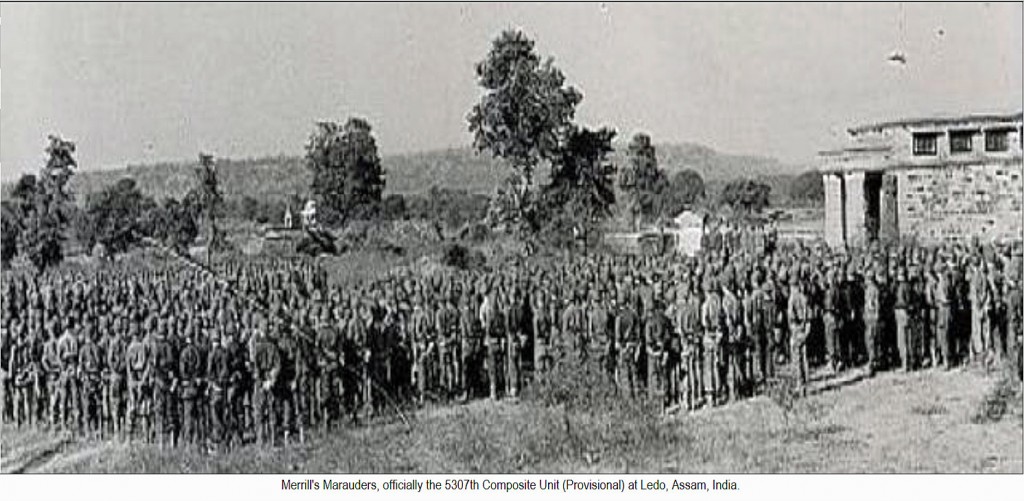Special Forces Part 1 - From Birth to Present Day - The first Special Forces groups originated from an elite combined Canadian-American unit that fought in the Aleutians, Italy, and southern France. It was nicknamed the Devils Brigade, and formed on July 9, 1942, at Fort William Henry in Montana. Merrill’s Marauders is known for their 5 major battles and 17 skirmishes in the China-Burma-India Theater.
The Marauders’ greatest feat was their march through miles of thick Burmese jungle in route to the capture of the vital airfield at Myitkyina. Decimated by disease and battle casualties, the Marauders were disbanded after the battle, and replaced by the Mars Task Force, a similar infantry unit that fought in Burma and China until the end of the war. While with the Mars Task Force, First Sergeant Jack Knight earned the only Medal of Honor awarded to special-operations Soldier during World War II.
In the Southwest Pacific Theater, Lieutenant General Walter Krueger, the innovative commander of the Sixth Army, established an elite reconnaissance unit called the Alamo Scouts. The Scouts ran more than 80 reconnaissance missions in New Guinea, and the Philippines, providing accurate, timely intelligence for the Sixth Army. In perhaps their greatest feat, the Scouts led a company of the 6th Ranger Battalion, and Filipino guerrillas in an attack on the Japanese prison camp at Cabanatuan, 30 miles behind the Japanese lines, freeing all 513 Allied prisoners. Never numbering more than 70 volunteers, the Alamo Scouts earned 44 Silver Star Medals, 33 Bronze Star Medals, and 4 Soldier’s Medals by the end of the war. In more than 80 hazardous missions, they never lost a man in action. Command Sergeant major Galen Kittleson, a Son Tay raider, began his career with the Alamo Scouts. Lieutenant General Krueger also formed the 6th Ranger Battalion to provide his Army with the capability of conducting raids behind enemy lines. Lieutenant Colonel Henry Mucci, the battalion commander, led the raid on Cabanatuan. Captain Arthur “Bull” Simons, a key figure in the early days of Special Forces, served as a company commander with the 6th Ranger Battalion.
Special Forces - From Birth to Present Day | Part I
Besides these organized special-operations efforts, a number of U.S. Army officers chose not to surrender at Bataan and conducted guerrilla operations behind Japanese lines in the Philippines. Major Russell Volckmann, who later played an important role in the birth of Special Forces, escaped from the enemy and with First Lieutenant Donald D. Blackburn, formed a Filipino guerrilla band in northern Luzon, which by 1945 consisted of five regiments. Colonel Wendell Fertig raised his own guerrilla force on Mindanao that ultimately totaled some 20,000 fighters.
 These men organized the insurgency against the Japanese and waged a classic guerrilla campaign until the end of the war. In more than 80 hazardous missions, they never lost a man in action. Command Sergeant major Galen Kittleson, a Son Tay raider, began his career with the Alamo Scouts. Lieutenant General Krueger also formed the 6th Ranger Battalion to provide his Army with the capability of conducting raids behind enemy lines. Lieutenant Colonel Henry Mucci, the battalion commander, led the raid on Cabanatuan. Captain Arthur “Bull” Simons, a key figure in the early days of Special Forces, served as a company commander with the 6th Ranger Battalion.
These men organized the insurgency against the Japanese and waged a classic guerrilla campaign until the end of the war. In more than 80 hazardous missions, they never lost a man in action. Command Sergeant major Galen Kittleson, a Son Tay raider, began his career with the Alamo Scouts. Lieutenant General Krueger also formed the 6th Ranger Battalion to provide his Army with the capability of conducting raids behind enemy lines. Lieutenant Colonel Henry Mucci, the battalion commander, led the raid on Cabanatuan. Captain Arthur “Bull” Simons, a key figure in the early days of Special Forces, served as a company commander with the 6th Ranger Battalion.
Besides these organized special-operations efforts, a number of U.S. Army officers chose not to surrender at Bataan and conducted guerrilla operations behind Japanese lines in the Philippines. Major Russell Volckmann, who later played an important role in the birth of Special Forces, escaped from the enemy and with First Lieutenant Donald D. Blackburn, formed a Filipino guerrilla band in northern Luzon, which by 1945 consisted of five regiments. Colonel Wendell Fertig raised his own guerrilla force on Mindanao that ultimately totaled some 20,000 fighters. These men organized the insurgency against the Japanese and waged a classic guerrilla campaign until the end of the war. More on Merrill's Marauders.
Notes:
1. The lady that is pictured in the photo is holding a shadow box that helps memorialize Clyde Miller of Merrill’s Marauders.
2, Merrill’s Marauders photo was originally published in Nimitz News, a publication of The National Museum of the Pacific War How did this group help mission efforts?
Special Forces Article Series
Special Forces Part I: From Birth to Present Day [You'er Here]
Special Forces Part 2: The Early Years
Special Forces Part 3: Twelve Man Teams
Special Forces Part 4: The Story Behind the Green Beret
Special Forces Part 5: Serving During the Vietnam War
Special Forces Part 6: Their Dangerous Missions
 These articles are brought to you by Jeff Daley - Vietnam Veteran
These articles are brought to you by Jeff Daley - Vietnam Veteran



Comments(1)